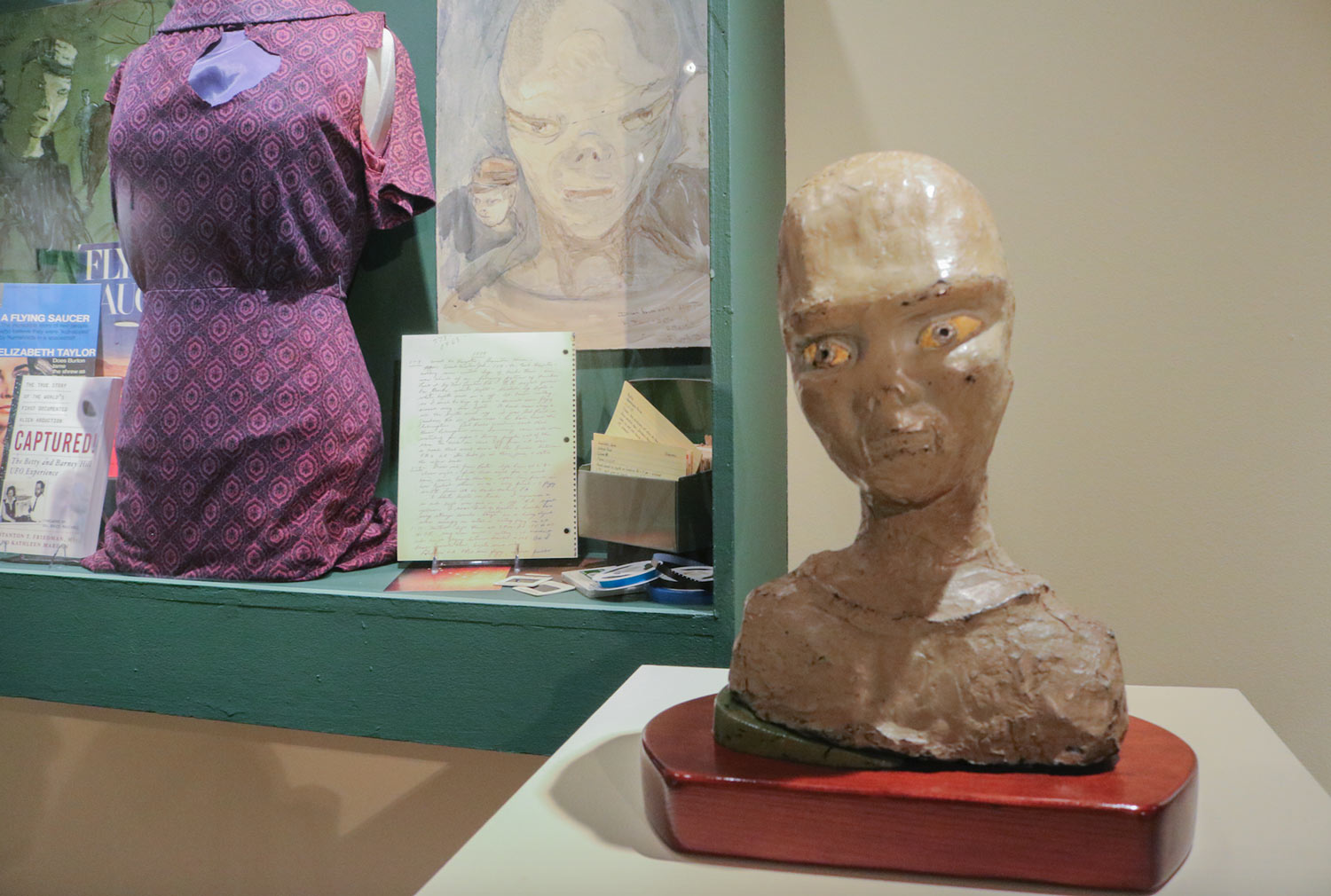
Though the Hills initially shared their experience— a 2 a.m. interaction with a huge, “pancake-shaped” flying saucer occupied by some eight-11 humanoid figures in black military garb — only with officials at Pease Air Force Base in Newington, their story was eventually leaked to the public. Following a five-part feature in a Boston newspaper that thrust the reluctant couple into the national spotlight in 1965, the Hills ultimately resolved to release their own account —a narrative bolstered by artifacts that included Betty’s torn and stained dress, a star map Betty had drawn from her memories of the abduction, a fiberglass bust based on the Hills’ description of the aliens they encountered and more.
Now six decades old, the Hills’ story was the first widely reported case of alien abduction in the United States. And when UNH came into possession of the Hills’ papers and tapes detailing the event in 2006, two years after Betty’s death at the age of 85, it also became a compelling case study in the role of popular culture artifacts in a university archive. In March, Bill Ross, professor and head of the Milne Special Collections and Archives Department at UNH’s Dimond Library since 1990, published an article about the collection — and the singular challenges it has presented — in The Journal of Popular Culture.
At the time the university acquired the collection, Ross notes, the university archive maintained “meager” popular culture holdings, including the files of a New Hampshire-based science fiction poet and some locally produced art for and original issues of the Teenage Mutant Ninja Turtles comic book series. The department’s policy neither specifically included nor excluded such collections, and Ross says the decision to accept Betty’s bequest gave Special Collections the opportunity to broaden its holdings in nontraditional and underrepresented research areas. It also reflected growing acceptance on the national level of popular culture collections within academic archives and underscored the role archivists have in furthering the study of popular culture.

Photo By Jeremy Gasowski
“Word spread about the collection fairly rapidly,” Ross recalls. “Visitors have included both true believers and skeptics, as well as what we described as ‘alien-abduction tourists.’ Before long, we had our own page in Atlas Obscura and the state put a historical marker at the site of the alleged abduction, so the significance of the collection in the public’s mind and to popular culture was established pretty firmly.”
Ross, who retired from UNH in June after 31 years, describes taking the collection on as an “education — even for an archivist of a certain age. I have never dealt with a collection that resonated with such a large cross section of the public and with a lot of people who would never consider visiting an archive otherwise.”
The approaching 60th anniversary of the Hills’ alleged abduction has brought renewed interest in their story, including a rerelease of “Captured! The Betty and Barney Hill UFO Experience,” a 2007 account co-authored by Betty’s niece Kathleen Marden ’71. In 2017, UNHInnovation licensed elements of the collection to the TBS television show “People of Earth,” which created reproductions for an alien exhibit featured in an episode that aired Sept. 11 of that year. But while the Hills’ collection of artifacts is arguably the most unusual of the university’s licensed holdings, it’s not the first piece of UNH-owned intellectual property to make it to Hollywood. That distinction belongs to a 2014 image of the Mariana Trench, the deepest oceanic trench on Earth, created by scientists from the UNH Center for Coastal and Ocean Mapping/Joint Hydrographic Center, which was licensed by Warner Bros. for the movie “Godzilla.”